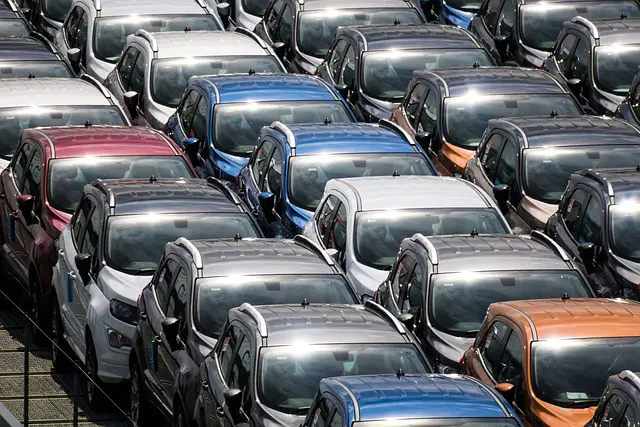- In June, auto retail sector sales reported a 10% YoY growth across all vehicle categories, including 2W, 3W, PV, Tractor and CV, with respective growth rates of 7%, 75%, 5%, 41%, and 0.5%.
- Even though retail figures declined by -3% compared to pre-COVID levels, the overall retail figure remained relatively positive, except for 2W sales (-14%), which continued to suffer setbacks. When compared to June’19, CV grew by 1.5% for the first time as a result of COVID.
- Three of the segments recorded all-time highs in June’23: 3W, PV, and Tractor.
- EV sales are impacted by the reduction in FAME subsidies, which will continue to pressure the two-wheeler market.
- Inventory pressures and demand-supply mismatches are impacting profitability in the passenger vehicle segment, but the upcoming festive season beginning at the end of August is promising.
- Indian monsoon is erratic, raising concerns about yield and possibly affecting automobile sales, especially in rural areas. However, expectation of evenly spread rains in the near future may revive rural demand and boost retail sales.
Auto Retail sector has grown YoY by 10%, but experienced an 8% MoM dip, showing a short-term slowing in sales. When analysed individually on a yearly basis, 2W, 3W, PV, Tractor and CV segments registered growths of 7%, 75%, 5%, 41% and 0.5% respectively. In comparison to pre-COVID figures, the overall auto retail saw a marginal decrease of 3%, with 2W being the sole exception. Oddly enough, CV category achieved a 1.5% growth compared to June’19; this is the first time it has exceeded pre-COVID levels.
In spite of some short-term contraction, India’s growth narrative remains resilient. June’23 saw all-time highs for the 3W, PV, and tractor segments.
A softer demand was attributed to economic conditions and higher entry-level bike costs, resulting in supply constraints from some OEMs in the 2W sector. Sales were not markedly boosted by new model introductions, festive promotions, or seasonal factors. Due to the government reducing FAME subsidies, which triggered extreme price hikes, two-wheeler sales declined by 12% MoM. Electric vehicle sales declined by 56% MoM.
Due to low base effects and positive market sentiment, the 3W market experienced robust growth in June’23. Although OBD2 vehicles are currently unavailable, the shift to alternative fuels, primarily electric vehicles, continues to play a significant role in driving this growth.
The PV segment encountered a shifting landscape with fluctuating demand, changing product portfolios and changes in market sentiment. FADA applauds Maruti’s swift response in helping dealers to move slow-moving inventory by covering their interest costs, which gave a boost to the segment. Although suppliers had irregular access to popular models and older model supplies were low, there was an uptick in demand for new models, while rural sales are predicted to increase further.
As a result of inconsistent demand, supply issues, government policies, and external market factors, the CV segment faced mixed dynamics. Despite fluctuating demand and vehicle availability issues, the government’s infrastructure push and coal mining growth led to a growth in demand for heavy commercial vehicles, counterbalanced by high interest rates and rising prices.
Auto Retail Sector Outlook for the near future
Despite new schemes and expectations of monsoon-boosted sentiment, the July’23 Auto Retail Outlook indicates mixed trends. Despite new schemes and the expectation of monsoon-boosted sentiment, the two-wheeler market expects continued supply challenges and economic pressures. Meanwhile, cutbacks in FAME subsidies threaten EV sales. As a result of favorable market responses and rising demand, the three-wheeler market anticipates steady growth.
The passenger vehicle segment is caught between two forces. As new models come out and rural markets may be on the rise, dealers must manage their OEM inventories and ensure that demand meets supply, which could contribute to their lack of profitability. Despite this, there is anticipation for an uptick in sales around the coming festive season in late August. The commercial vehicle sector must reconcile aspects of optimism and uneasiness: its growth may be stimulated by infrastructure projects and improved financing options, while the monsoon season might bring unexpected challenges.
Agriculture across India is being affected by the uneven rainfall pattern of the monsoon. Crops are being sowed late and yields may decrease, impacting the sales of vehicles in rural areas due to lower disposable income. However, if upcoming rains prove favorable, we could see revival in automotive demand coming from such areas. FADA is thus reservedly hopeful for the near term outlook.
Read Also:
- Planning an EV Car as your next? The Insurance is costlier than ICE vehicles
- MG Motor Achieves Highest-Ever Sales Figures for March 2023; FY2023 Shows Impressive 21% Rise in Numbers
- Maruti and Hyundai Witness Single-Digit Growth in June PV Sales as Indian Automobile Industry Surpasses Historic 20 Lakh Unit Milestone in H1 2023
- How India is faring on the journey to achieve semiconductor supremacy
